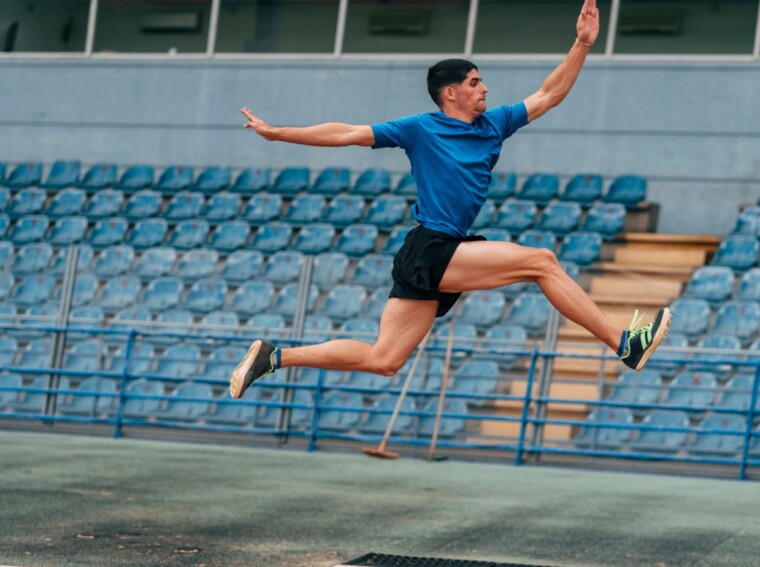Long jump is a sport that demands impeccable skill and precision. Its techniques, especially the ones performed after an approach run, are crucial to maximizing distance covered in the air. In fact, teknik dalam lompat jauh setelah melakukan awalan adalah (the technique in long jump after doing the approach) can be considered as one of the most essential components of this athletic event.
Teknik Dalam Lompat Jauh Setelah Melakukan Awalan Adalah
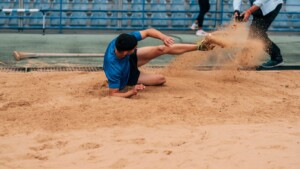 When it comes to the technique in long jump after a run-up, there are four distinct phases. These include the approach phase, takeoff phase, flight phase, and landing phase. Each of these stages plays an integral role in achieving the maximum distance during a long jump.
When it comes to the technique in long jump after a run-up, there are four distinct phases. These include the approach phase, takeoff phase, flight phase, and landing phase. Each of these stages plays an integral role in achieving the maximum distance during a long jump.
Approach Phase
The approach phase is where all great jumps begin. It’s here that athletes gather their momentum, building speed with each stride. This isn’t just about running fast though – it’s also about maintaining balance and control. The final three steps are crucial as they set up the body for the explosive takeoff.
Takeoff Phase
Following the approach comes the takeoff phase. At this point, athletes convert horizontal velocity into vertical lift while maintaining forward momentum. They do this by planting their foot firmly and extending their body upwards and forwards – like coiling a spring before releasing it.
Flight Phase
 In mid-air during the flight phase, competitors adopt specific body positions to maximize distance covered while minimizing air resistance. Some may stretch out fully (the ‘hitch-kick’ method), others fold themselves into a ball (the ‘tuck’ method). Different techniques work for different people; what matters most is keeping balanced and streamlined through the air.
In mid-air during the flight phase, competitors adopt specific body positions to maximize distance covered while minimizing air resistance. Some may stretch out fully (the ‘hitch-kick’ method), others fold themselves into a ball (the ‘tuck’ method). Different techniques work for different people; what matters most is keeping balanced and streamlined through the air.
Landing Phase
Lastly we have the landing phase – arguably as important as any other stage in determining overall jump distance. Here’s where precision really counts: athletes must time their descent perfectly to avoid fouling while gaining every possible inch on landing. A good technique involves stretching out both legs straight ahead and swinging arms forward for balance – ensuring they land heel first before rolling onto their backside without touching beyond their mark.
Each of these stages involves its own specific techniques – from gathering momentum during approach to optimizing body position mid-flight and timing descent just right upon landing. Mastering them can make the difference between a good jump and a great one.
Common Mistakes to Avoid
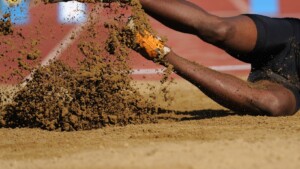 When it comes to mastering the teknik dalam lompat jauh setelah melakukan awalan adalah, or the technique of long jump after making a run-up, there are several common mistakes that athletes often make. These errors can drastically affect their performance and prevent them from reaching their full potential.
When it comes to mastering the teknik dalam lompat jauh setelah melakukan awalan adalah, or the technique of long jump after making a run-up, there are several common mistakes that athletes often make. These errors can drastically affect their performance and prevent them from reaching their full potential.
Incorrect Timing
One of the most prevalent issues is incorrect timing. It’s crucial for an athlete to accurately judge their take-off point, as jumping too early or too late can result in a reduced leap distance. The optimal take-off point varies between individuals due to differences in speed, stride length, and other factors. However, consistently practicing this aspect will help fine-tune an athlete’s timing.
To illustrate, consider an athlete who jumps too early. They’ll land closer to the board than necessary and won’t maximize their flight time or distance covered. On the flip side, if they jump too late, they risk fouling by stepping over the board.
Overstriding
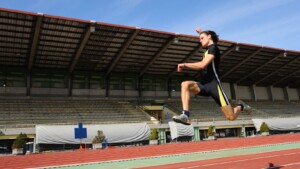 Overstriding – taking longer steps than necessary during the run-up – is another common mistake. While it might seem like overstriding could help cover more ground quickly, it actually slows down athletes due to increased ground contact time and inefficient energy usage.
Overstriding – taking longer steps than necessary during the run-up – is another common mistake. While it might seem like overstriding could help cover more ground quickly, it actually slows down athletes due to increased ground contact time and inefficient energy usage.
Instead of longer strides, athletes should aim for faster turnover (the rate at which they complete each stride). This provides a better balance between stride length and speed, enabling them to reach their optimal take-off velocity.
By understanding and avoiding these mistakes in teknik dalam lompat jauh setelah melakukan awalan adalah, athletes can improve performance in long jump events. Practice coupled with mindful execution will certainly pave way for better leaps!
Tips for Improvement
Perfecting the teknik dalam lompat jauh setelah melakukan awalan adalah or technique in long jump after making a run-up requires a combination of strength, speed, and finesse. Here’s some handy advice on how to smooth out those rough edges in your performance.
Work on Speed and Strength Training
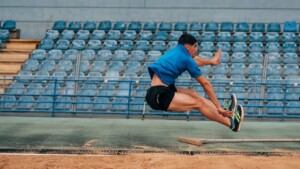 One can’t underestimate the importance of speed and strength in long jump. They’re instrumental in achieving that explosive launch off the board. Athletes can benefit from incorporating plyometric exercises into their training regimen. These include activities like box jumps and hurdle hops which help build fast-twitch muscles crucial for powerful leaps.
One can’t underestimate the importance of speed and strength in long jump. They’re instrumental in achieving that explosive launch off the board. Athletes can benefit from incorporating plyometric exercises into their training regimen. These include activities like box jumps and hurdle hops which help build fast-twitch muscles crucial for powerful leaps.
At the same time, sprint workouts are key to bolstering an athlete’s running speed during the approach phase. Intervals, hill sprints, or resistance runs – they all contribute towards developing a faster run-up.
Strength training, particularly targeting core muscles and lower body, enhances stability during flight and landing phases. Squats, lunges and deadlifts are just few examples of exercises that could be included in a workout plan.
To illustrate these points:
| Exercise Type | Examples |
|---|---|
| Plyometrics | Box Jumps, Hurdle Hops |
| Sprint Workouts | Interval Runs, Hill Sprints |
| Strength Training | Squats, Lunges |
Focus on Technique and Form
Another significant factor is mastering proper technique. A good starting point would be perfecting take-off mechanics – positioning one’s body correctly at the moment of liftoff can make all the difference between an average jump and an outstanding one.
In addition to this, it’s vital to maintain correct form mid-air – keeping legs extended forward while leaning back slightly helps balance during flight; tucking knees up towards chest assists with landing safely without losing distance due to falling backwards.
Get Expert Coaching and Feedback
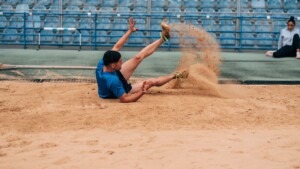 Lastly but certainly not least important, getting expert coaching and consistent feedback is invaluable. Coaches usually possess a wealth of experience and knowledge, providing athletes with personalized guidance tailored to their specific needs. They can spot weaknesses or errors in technique that might be hard for the athlete to recognize on their own.
Lastly but certainly not least important, getting expert coaching and consistent feedback is invaluable. Coaches usually possess a wealth of experience and knowledge, providing athletes with personalized guidance tailored to their specific needs. They can spot weaknesses or errors in technique that might be hard for the athlete to recognize on their own.
Moreover, constructive feedback from peers or fellow competitors could also provide unique insights. After all, everyone’s learning journey in athletics is different; what works for one may not work for another. By sharing experiences and exchanging advice, it’s possible to uncover new strategies or perspectives that can lead to improvements.
At the end of the day, mastering teknik dalam lompat jauh setelah melakukan awalan adalah involves a fine balance of physical prowess and technical skill – bolstered by quality training and insightful feedback.

